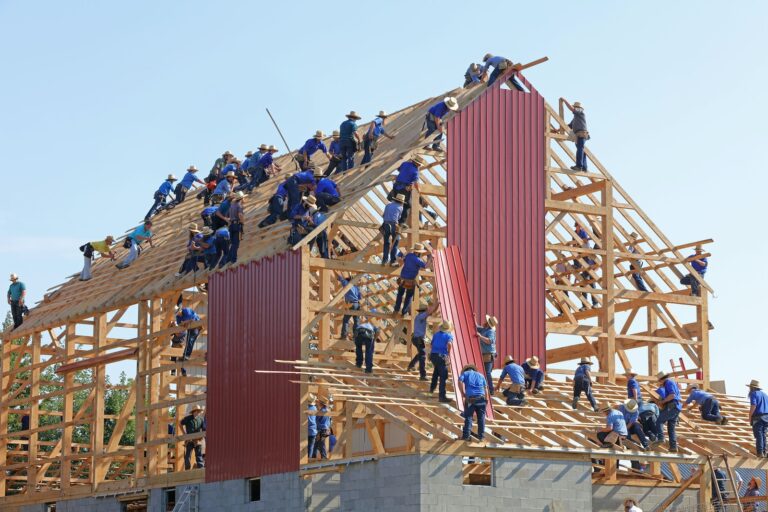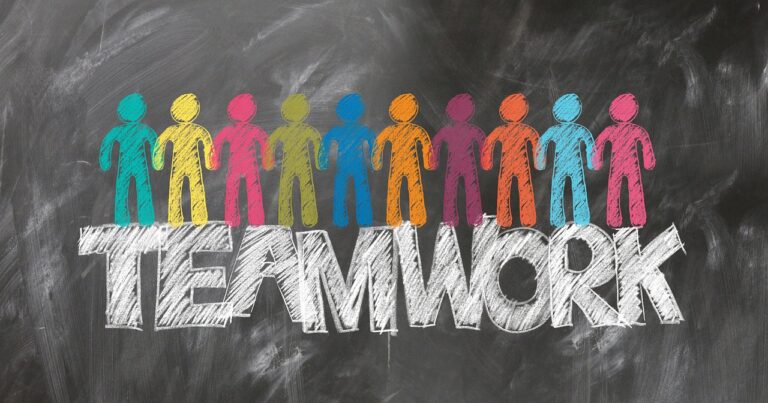Breaking the Divide: Bridging the Gap Between Mediocre and High Achieving Individuals
The Complex Relationship between Mediocre and High Achieving Individuals
In today’s world, where competition is fierce, the need to excel and achieve greatness is more important than ever. There are those who work hard and push themselves to be the best they can be, and then there are those who settle for mediocrity. Mediocre people often feel threatened by high achievers, while high achievers tend to view mediocre people with disdain. The relationship between these two groups is complex, and it is important to understand how their interactions affect the workplace and the individuals involved.
The dichotomy between mediocre and high achieving individuals is not new. It has been a part of human society for centuries. High achievers are those who set lofty goals for themselves and work tirelessly to achieve them. They are the ones who make sacrifices, work long hours, and constantly strive to improve themselves. On the other hand, mediocre people are those who are content with their current level of performance and do not feel the need to strive for excellence.
Mediocre people often view high achievers as arrogant, selfish, and difficult to work with. They may feel that high achievers set unrealistic expectations and make it difficult for others to achieve success. This perception is often rooted in envy and a lack of confidence in their own abilities. In contrast, high achievers tend to view mediocre people as lazy, unambitious, and lacking in drive. They may feel frustrated by the lack of motivation and the unwillingness to push themselves to excel.
This dynamic can create tension and conflict in the workplace. It can lead to resentment, misunderstandings, and a breakdown in communication. It can also create a toxic environment where teamwork and collaboration are difficult to achieve. As a result, it is important to address the issue and find ways to bridge the gap between mediocre and high achieving individuals.
In the following sections, we will explore the characteristics of mediocre and high achieving individuals, the reasons for their dislike of each other, the impact of their interactions on organizations, and strategies for bridging the gap. By understanding the complexity of this relationship and finding ways to work together effectively, we can create a more harmonious workplace and achieve greater success as a team.
Mediocre People
Definition of mediocre people
Mediocre people are those who are satisfied with average performance and are not motivated to push themselves to achieve greatness. They tend to be content with their current level of competence and may not see the value in striving for excellence. While they may have the necessary skills and knowledge to perform adequately, they lack the drive and passion to excel.
Characteristics of mediocre people
Mediocre people often have a negative outlook on life and may lack confidence in their abilities. They may have a fear of failure or success, which can hold them back from reaching their full potential. They may also lack the discipline and focus needed to achieve great things. As a result, they tend to settle for less than they are capable of, and may become complacent in their work.
How mediocre people perceive high achievers
Mediocre people may view high achievers as overconfident and intimidating. They may feel that high achievers are too demanding and set unrealistic expectations for themselves and others. They may also feel that high achievers make them look bad by comparison, highlighting their own shortcomings and inadequacies.
Examples of how mediocre people react to high achievers
Mediocre people may react negatively to high achievers by belittling their accomplishments or downplaying their achievements. They may also try to undermine their efforts by withholding information or not providing the support they need to succeed. In some cases, they may actively try to sabotage high achievers to prevent them from getting ahead.
Overall, the attitude of mediocre people towards high achievers is one of resentment and envy. They may feel threatened by the success of others and may seek to bring them down in order to feel better about themselves.
Mediocre people may lack the drive and motivation to achieve greatness, and as a result, they may feel threatened by high achievers. However, it is important to recognize that everyone has their own unique strengths and weaknesses, and that there is value in striving for excellence. By embracing a growth mindset and working to develop their own skills and abilities, mediocre people can become high achievers themselves, and work effectively with others who have already achieved greatness.
High Achievers
Definition of high achievers
High achievers are individuals who have a strong desire to excel and consistently strive for excellence in their work. They set ambitious goals for themselves and work tirelessly to achieve them. They tend to be highly self-motivated, disciplined, and focused on their objectives. They are driven by a desire to succeed and are willing to put in the effort and make the necessary sacrifices to achieve their goals.
Characteristics of high achievers
High achievers tend to have a positive outlook on life and are confident in their abilities. They are not afraid to take risks and are willing to step out of their comfort zone to pursue their dreams. They are also highly disciplined and tend to have excellent time-management skills. They are able to prioritize their tasks effectively and work efficiently to achieve their goals.
How high achievers perceive mediocre people
High achievers may view mediocre people as lacking in drive and ambition. They may feel frustrated by the lack of effort and commitment they see in others. They may also view mediocre people as being content with mediocrity, which can be seen as a lack of respect for excellence and a lack of appreciation for hard work.
Examples of how high achievers react to mediocre people
High achievers may react to mediocre people with impatience or frustration. They may feel that their efforts are not appreciated or that they are not being given the support they need to succeed. In some cases, they may also feel that mediocre people are holding them back, preventing them from achieving their full potential.
High achievers are driven by a desire to excel and are often highly motivated to achieve their goals. While they may view mediocre people with frustration or impatience, it is important to recognize that everyone has their own unique strengths and weaknesses. By working together and recognizing the value of each other’s contributions, high achievers and mediocre people can create a more harmonious and productive workplace. High achievers can also work to mentor and support those who are struggling, helping them to develop their skills and achieve their potential.
Reasons for Dislike
Reasons why mediocre people dislike high achievers
One of the primary reasons why mediocre people may dislike high achievers is envy. They may feel that high achievers are receiving more recognition or opportunities, which can be threatening to their own sense of self-worth. They may also view high achievers as arrogant or competitive, and may feel that they are not being treated fairly.
Another reason for the dislike may be a lack of understanding. Mediocre people may not fully understand the drive and motivation that high achievers possess, and may view their efforts as unnecessary or excessive. They may also feel that high achievers are putting too much pressure on themselves or others, which can create an uncomfortable work environment.
Reasons why high achievers dislike mediocre people
High achievers may dislike mediocre people because they view them as lacking in ambition and motivation. They may feel that mediocre people are not contributing to the team as much as they could, which can be frustrating for those who are putting in a lot of effort. High achievers may also feel that mediocre people are holding them back or preventing them from achieving their full potential.
Another reason for the dislike may be a lack of effort. High achievers tend to put in a lot of effort to achieve their goals, and may view mediocre people as lazy or uncommitted. They may feel that mediocre people are not pulling their weight or contributing to the team effort in a meaningful way.
The role of envy in the relationship between mediocre and high achieving people
Envy plays a significant role in the relationship between mediocre and high achieving people. Mediocre people may envy the success and recognition that high achievers receive, while high achievers may envy the ability of mediocre people to relax and not take work as seriously. Envy can create a toxic work environment, as it can lead to resentment, hostility, and a lack of trust.
To address envy, it is important for both high achievers and mediocre people to recognize the value of each other’s contributions. High achievers can acknowledge the importance of taking breaks and maintaining a work-life balance, while mediocre people can recognize the importance of striving for excellence and pushing oneself to achieve their potential.
The dislike between mediocre and high achieving people can create tension and conflict in the workplace. By understanding the reasons behind the dislike, it is possible to find ways to bridge the gap and create a more harmonious work environment. High achievers can work to support and mentor mediocre people, while also recognizing the value of relaxation and taking breaks. Mediocre people can work to develop their skills and strive for excellence, while also recognizing the importance of work-life balance.
Strategies for Bridging the Gap
Ways to bridge the gap between mediocre and high achieving people
-
Encourage communication and collaboration: Open communication channels and encourage collaboration between high achievers and mediocre people. This can help to break down barriers and create a more cohesive team dynamic.
-
Recognize each other’s strengths: High achievers and mediocre people have different strengths and weaknesses. Recognizing and valuing each other’s strengths can help to create a more inclusive work environment and foster a sense of mutual respect.
-
Foster a growth mindset: Encourage a growth mindset, which emphasizes the importance of learning, effort, and persistence. This can help to create a culture of continuous improvement, where everyone is motivated to strive for excellence.
-
Provide opportunities for growth and development: Provide opportunities for both high achievers and mediocre people to develop their skills and advance in their careers. This can help to build confidence and create a sense of purpose and motivation.
Strategies for high achievers to work effectively with mediocre people
-
Practice patience and empathy: High achievers can practice patience and empathy when working with mediocre people. This can help to build trust and create a more supportive work environment.
-
Provide mentorship and support: High achievers can provide mentorship and support to those who are struggling. This can help to develop the skills and confidence of mediocre people, and foster a sense of teamwork and collaboration.
-
Acknowledge and value contributions: High achievers can acknowledge and value the contributions of mediocre people. This can help to build a sense of mutual respect and create a more inclusive work environment.
Strategies for mediocre people to work effectively with high achievers
-
Strive for excellence: Mediocre people can work to develop their skills and strive for excellence. This can help to build confidence and create a sense of motivation and purpose.
-
Be open to feedback and guidance: Mediocre people can be open to feedback and guidance from high achievers. This can help to develop their skills and improve their performance, while also fostering a sense of mutual respect and trust.
-
Acknowledge and value contributions: Mediocre people can also acknowledge and value the contributions of high achievers. This can help to build a sense of mutual respect and create a more inclusive work environment.
Fostering a Culture of Mutual Respect and Continuous Improvement in the Workplace
The relationship between mediocre and high achieving individuals can be challenging, but it is important to recognize the value of both groups. Mediocre people bring a sense of balance and perspective to the workplace, while high achievers bring a drive for excellence and a culture of continuous improvement. By bridging the gap between these two groups, we can create a more cohesive and successful team dynamic.
Envy and a lack of understanding are two primary reasons for the dislike between mediocre and high achieving individuals. Envy can create resentment, hostility, and a toxic work environment, while a lack of understanding can create misunderstandings, a lack of communication, and a breakdown in teamwork.
To bridge the gap, it is important to encourage communication and collaboration, recognize each other’s strengths, foster a growth mindset, and provide opportunities for growth and development. High achievers can practice patience, empathy, and provide mentorship and support to those who are struggling. Mediocre people can strive for excellence, be open to feedback and guidance, and acknowledge and value the contributions of high achievers.
In conclusion, the relationship between mediocre and high achieving individuals is complex, but by recognizing and valuing each other’s contributions, we can create a more harmonious and productive work environment. It is important to foster a culture of mutual respect, teamwork, and continuous improvement, which can lead to greater success and satisfaction for everyone involved.







